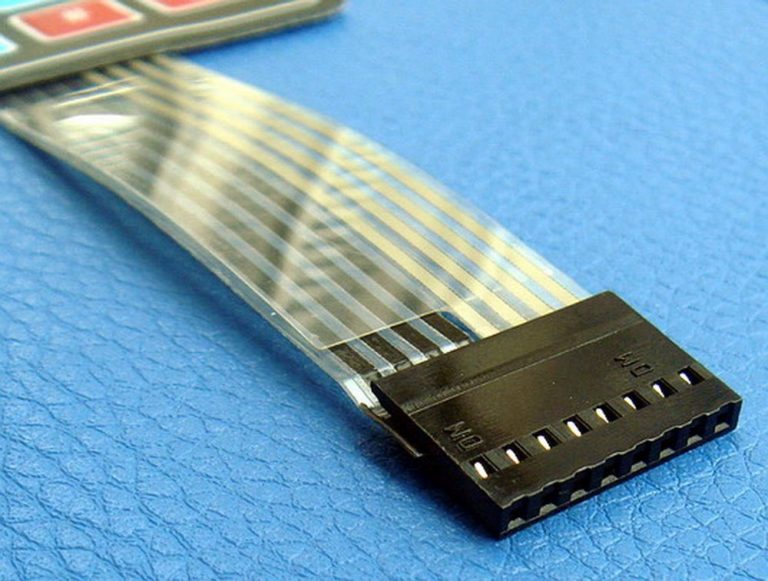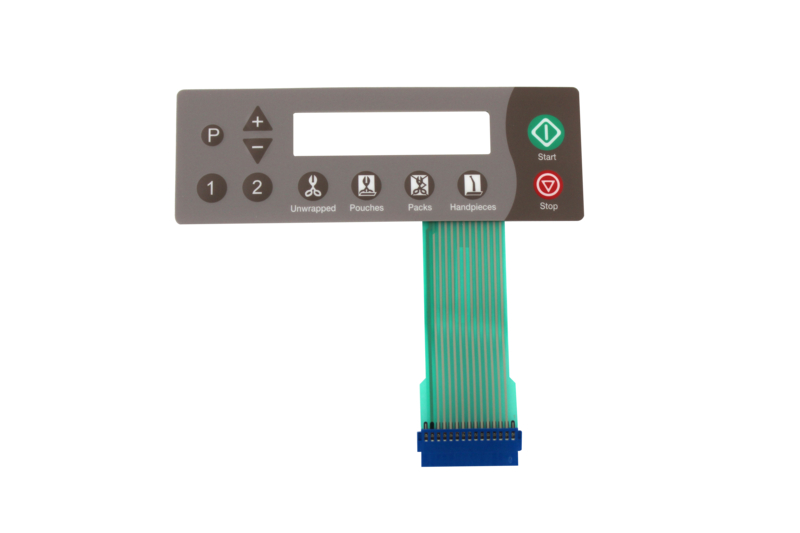Don’t miss the value of working with a trustworthy membrane switch manufacturer for initial builds.
Don’t miss the value of working with a trustworthy membrane switch manufacturer for initial builds.
Blog Article
All Concerning Membrane Change: Understanding Its Style and Capability
When you assume concerning the control user interfaces in modern-day gadgets, membrane buttons typically come to mind. Allow's discover what collections membrane switches over apart from other control systems.
What Are Membrane Buttons?

Membrane layer switches can likewise be personalized concerning form, size, and graphics, allowing makers to produce distinct interfaces customized to details items. Overall, membrane layer switches play a substantial function in improving user experience across a broad range of applications.
Exactly How Membrane Switches Job
When you press a trick on a membrane layer button, it activates an uncomplicated yet effective device. membrane switch manufacturer. The top layer, often made of flexible product, pushes down onto a conductive layer below it.
You'll discover that the responsive comments differs based upon the switch design, supplying either a soft click or a more noticable feedback. As soon as you release the trick, the membrane returns to its original setting, reopening the circuit and quiting the signal. This process happens practically immediately, ensuring a responsive customer experience.
Membrane buttons are popular due to their toughness and resistance to dirt and moisture, making them ideal for different applications, from house home appliances to clinical gadgets. Recognizing this operation aids you appreciate their extensive use.
Secret Elements of Membrane Buttons
Understanding the essential elements of membrane layer switches is basic for understanding their capability and layout. At the core, you'll locate the visuals overlay, which provides the aesthetic interface for individuals. Beneath that, there's a spacer layer that divides the circuit layers, guaranteeing that they do not make call till pressed. The circuit layer is where the magic takes place; it contains conductive traces that complete the circuit when you press the button. An additional essential aspect is the glue backing, allowing the switch to adhere to surfaces safely. The protective layer shields versus ecological variables and put on, expanding the button's life expectancy. Each component plays a substantial function in making certain trustworthy efficiency and customer communication. By recognizing these elements, you'll obtain understanding into just how membrane layer switches over run and their significance in numerous applications.
Products Used in Membrane Change Layout
The efficiency and durability of membrane switches greatly depend on the products used in their layout. You usually encounter polyester and polycarbonate as main substrates as a result of their superb strength and versatility. These products withstand scratches and chemicals, making them optimal for requiring settings.
The conductive layers frequently utilize silver or carbon, selected for their reliability and conductivity. membrane switch manufacturer. Silver offers remarkable performance, while carbon is an affordable option. For the overlay, you may think about a matte or shiny finish, relying on your aesthetic demands and customer experience
Make certain to pick adhesives that endure ecological aspects like temperature and moisture. Choosing the appropriate materials will certainly ensure your membrane button stands the test of time.
Layout Considerations for Membrane Layer Switches
While making membrane switches, it's vital to take right into account numerous factors that affect their functionality and user experience. Start by focusing on the format and button dimension; make specific they're instinctive and simple to browse.
Don't forget the visuals design; clear labeling and color contrast are significant for visibility. Verify your style fits environmental aspects, like wetness or temperature look at this now level variations, which could influence performance. Keep in mind the value of screening prototypes with real individuals to gather responses and make necessary adjustments. This repetitive procedure aids you fine-tune the style, verifying it meets both useful and visual requirements effectively. By meticulously taking into consideration these elements, you'll create a membrane button that boosts functionality and fulfillment.
Applications of Membrane Buttons
Membrane layer buttons are functional elements found in various applications, from commercial devices to customer electronic devices. You'll see their impact in equipments that need sturdy user interfaces and in devices that profit from smooth designs. Comprehending these applications helps you value the capability and practicality of membrane buttons in everyday modern technology.
Industrial Tools Use
When you're looking to boost the performance of industrial devices, membrane switches provide a reliable solution that incorporates durability with user-friendly design. These switches are best for severe settings, supplying resistance to dirt, dampness, and chemicals. You'll discover them in control panels for manufacturing equipments, heating and cooling systems, and medical tools, where accuracy and responsiveness are important. Their reduced account means they fit flawlessly into different tools, conserving important space while preserving ease of use. With personalized graphics and backlighting options, you can create an intuitive user interface for operators, home boosting effectiveness and safety and security. Plus, their lengthy life expectancy lowers upkeep costs, making them a smart financial investment for your industrial applications. Accept membrane buttons to streamline your operations and enhance general performance.
Customer Electronic Devices Integration
In the domain of customer electronics, membrane layer buttons play an essential duty in boosting customer communication and device performance. Membrane layer buttons likewise ensure durability and resistance to dust and moisture, extending the life-span of your electronics. By choosing membrane layer switches, you improve not simply the functionality however additionally the design of your tools, making daily communications smooth and enjoyable.
Advantages and Drawbacks of Membrane Layer Switches
While membrane layer switches offer a range of advantages, they likewise come with some disadvantages that you should think about. One substantial benefit is their small layout, making them perfect for space-constrained applications.

However, there are drawbacks. Membrane switches can have a shorter lifespan compared to mechanical switches, especially under heavy usage. They can additionally be much less tactile, which may affect individual responses throughout operation. In addition, if harmed, fixing them can be difficult and typically needs complete replacement. Ultimately, their sensitivity to severe temperature levels and ecological problems may limit their effectiveness in specific setups. Stabilizing these pros and disadvantages will aid you figure out if membrane layer switches are the best fit for your job.
Often Asked Concerns
For How Long Do Membrane Layer Switches Over Generally Last?
Membrane switches over typically last in between 5 to 10 years, depending on usage and ecological problems. You'll want to assess factors like wear, exposure to wetness, and temperature level changes to assess their longevity efficiently.
Can Membrane Switches Over Be Custom-made for Details Styles?
Yes, you can tailor membrane switches to fit certain designs (membrane switch manufacturer). You'll have the liberty to select shades, shapes, and layouts that match your project's demands, guaranteeing they mix effortlessly with your general visual
What Is the Cost Variety for Membrane Layer Switch Manufacturing?
The cost range for membrane layer switch production usually falls in between $1 and $10 each, relying on factors like layout intricacy, quantity, and products. You can obtain quotes from manufacturers to locate the most effective choice.

Are Membrane Layer Changes Water Resistant or Resistant?
Membrane layer switches can be made to be water-proof or resistant, relying on products made use of and building and construction methods. If you need them for wet settings, guarantee you specify those see it here demands throughout the style process.
Exactly How Do Membrane Switches Over Contrast to Standard Buttons?
Membrane switches are typically thinner and more adaptable than traditional buttons, providing a sleek layout. They're typically much easier to clean up and incorporate, yet may not offer the tactile comments you're used to with mechanical choices.
Final thought

Report this page